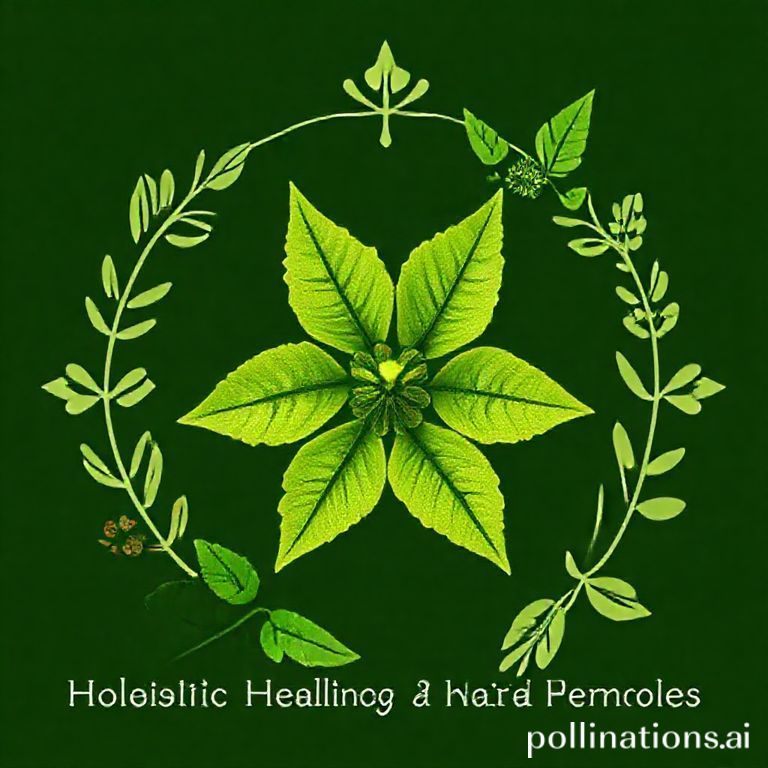Mexico, a land of vibrant culture and ancient traditions, holds a wealth of natural remedies within its diverse flora. For centuries, indigenous communities have relied on the healing power of Mexican herbs and plants, passing down knowledge through generations. This holistic approach to well-being focuses on treating the whole person – mind, body, and spirit – using nature’s pharmacy.
In recent years, there’s been a growing interest in natural and alternative medicine, leading many to rediscover the potent benefits of Mexican herbal remedies. From soothing teas to powerful poultices, these plants offer a gentle yet effective way to support overall health and address various ailments. Let’s delve into the fascinating world of holistic healing with Mexican herbs and plants and explore some of the most treasured remedies.
The Rich History of Mexican Herbal Medicine
The use of medicinal plants in Mexico dates back thousands of years, with evidence found in ancient codices and archaeological sites. Cultures like the Aztecs and Mayans possessed extensive knowledge of the local flora, utilizing herbs for everything from treating injuries and illnesses to spiritual ceremonies. This profound understanding of plant properties was deeply intertwined with their worldview, recognizing the interconnectedness of nature and human health.
Traditional Practices and Modern Applications
- Curanderos/as: Traditional healers, known as curanderos or curanderas, play a vital role in Mexican communities. They possess in-depth knowledge of herbal remedies and use them in conjunction with other healing modalities like massage, energy work, and spiritual guidance.
- Continuing Traditions: Many Mexican families continue to cultivate and use medicinal plants in their homes, passing down recipes and knowledge to younger generations. This ensures the preservation of traditional practices and a connection to their cultural heritage.
- Modern Integration: While traditional practices remain strong, there’s also increasing interest in scientifically validating the medicinal properties of Mexican herbs. Researchers are exploring the potential of these plants for treating various health conditions, bridging the gap between ancient wisdom and modern medicine.
Popular Mexican Herbs and Their Healing Properties
Mexico boasts a remarkable array of medicinal plants, each with unique properties and applications. Here are a few of the most well-known and widely used herbs:
Arnica (Arnica montana)
Arnica is a popular remedy for bruises, sprains, and muscle aches. Its anti-inflammatory properties help reduce swelling and pain. It is typically used topically in creams, gels, or oils.
Damiana (Turnera diffusa)
Damiana is considered an aphrodisiac and mood enhancer. It is believed to help with anxiety, depression, and sexual dysfunction. It is often consumed as a tea or tincture.
Epazote (Dysphania ambrosioides)
Epazote is a common culinary herb in Mexico, but it also possesses medicinal properties. It is traditionally used to treat intestinal parasites and digestive issues. It is important to use epazote in moderation, as it can be toxic in high doses.
Mexican Mint Marigold (Tagetes lucida)
Also known as “pericón,” this herb has a flavor similar to tarragon and is used to treat digestive problems, fever, and anxiety. It can be brewed as a tea or used in cooking.
Aloe Vera (Aloe barbadensis miller)
While widely known globally, aloe vera thrives in Mexico and is a staple for treating burns, cuts, and skin irritations. Its gel has soothing and healing properties. It can also be ingested for its laxative effects, though caution is advised.
Tepezcohuite (Mimosa tenuiflora)
Tepezcohuite is revered for its remarkable skin-regenerating properties. It’s used to treat burns, scars, and wounds, and is often found in skincare products.
Important Considerations When Using Mexican Herbs
While Mexican herbs offer a natural approach to healing, it’s essential to use them safely and responsibly:
- Consult with a Healthcare Professional: Before using any herbal remedy, especially if you have underlying health conditions or are taking medications, consult with a qualified healthcare professional or herbalist.
- Proper Identification: Ensure you have correctly identified the plant before using it, as some plants can be toxic. If you are unsure, seek guidance from an experienced herbalist.
- Dosage and Preparation: Follow recommended dosage guidelines and preparation methods carefully. Start with a low dose and gradually increase as needed.
- Source and Quality: Choose high-quality herbs from reputable sources. Consider growing your own herbs organically to ensure their purity.
- Pregnancy and Breastfeeding: Some herbs are not safe for pregnant or breastfeeding women. Always consult with a healthcare professional before using any herbal remedy during these times.
Conclusion
Holistic healing with Mexican herbs and plants offers a powerful way to connect with nature and support overall well-being. By understanding the rich history, properties, and safe usage of these natural remedies, we can tap into the wisdom of ancient traditions and embrace a more holistic approach to health. As interest in natural medicine continues to grow, Mexican herbs are poised to play an increasingly important role in promoting health and healing around the world.
If you found this article informative, share it with your friends and family and let’s keep the conversation about natural health alive!
IMAGE: A brightly lit, close-up shot of a variety of fresh Mexican herbs (like epazote, damiana, and mint marigold) arranged artfully on a rustic wooden table. Soft, diffused sunlight filters through a window in the background, creating a warm and inviting mood. The style is natural and slightly bohemian, emphasizing the connection to nature. In the background, blurred, are traditional Mexican pottery and woven textiles. The overall feeling is peaceful and promotes natural wellness.


